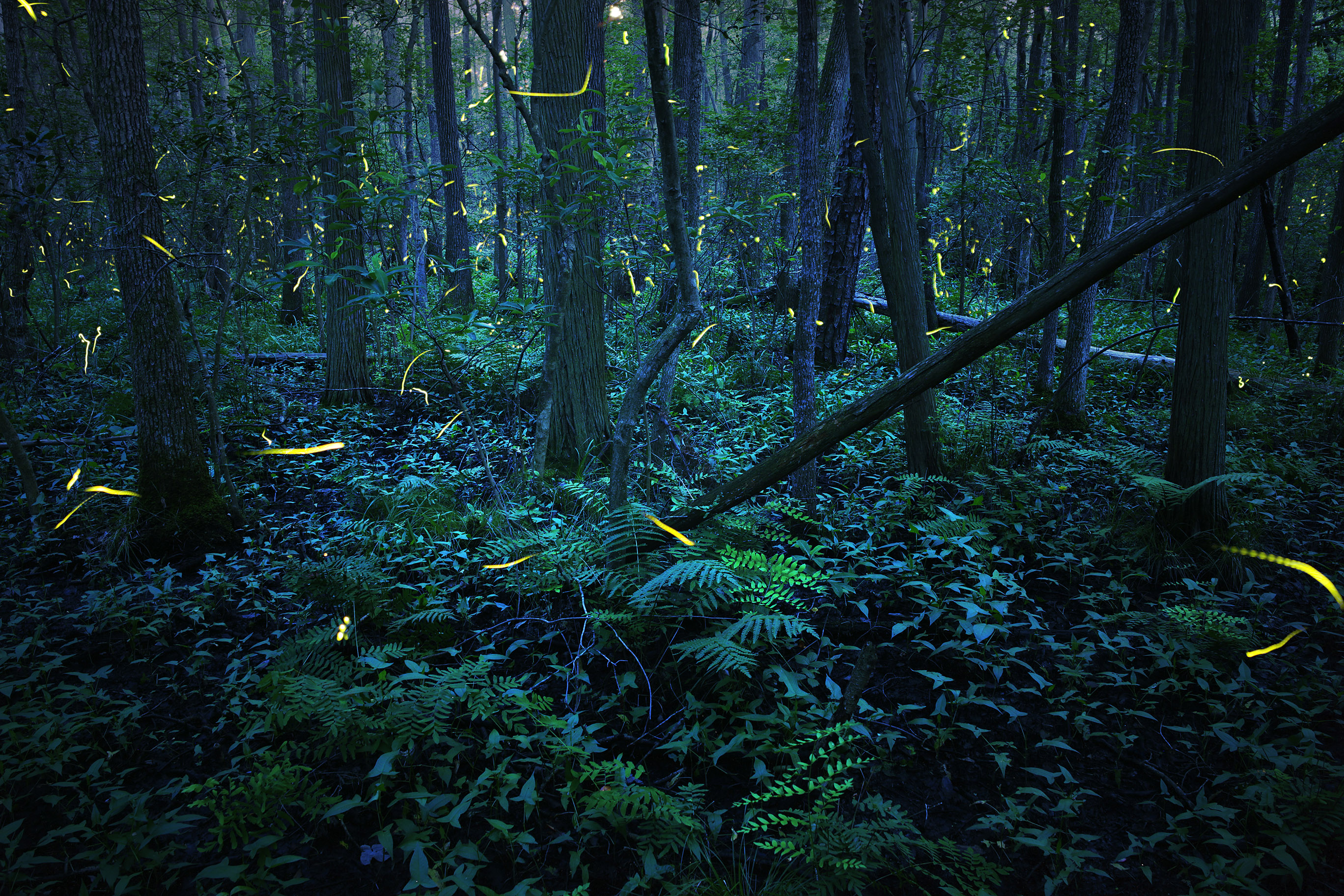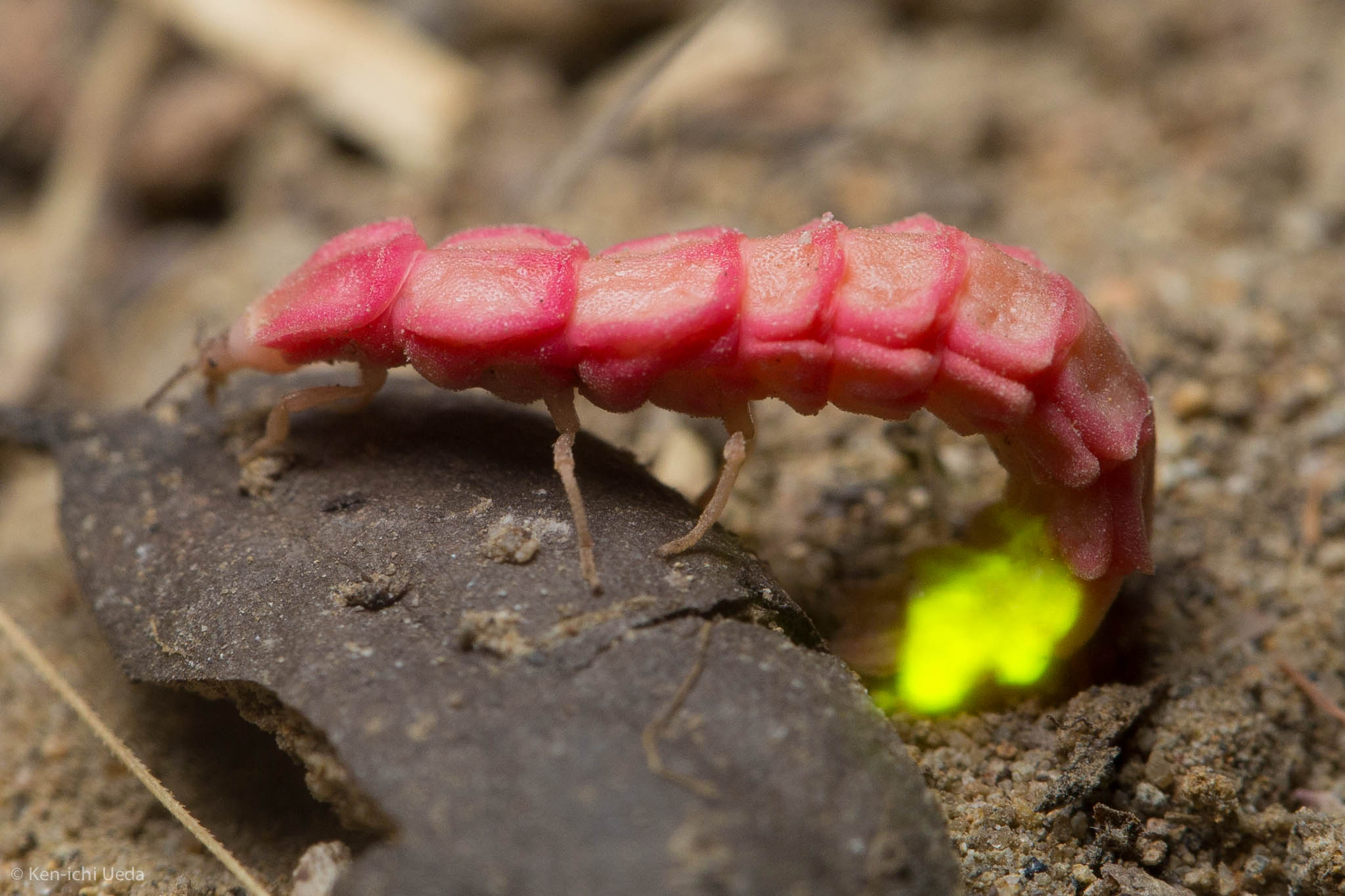Introducing the Xerces Society's new firefly conservation campaign.
Fireflies are some of our most beloved insects. Anyone who has had the opportunity to see them light up a summer evening sky is familiar with the sense of awe and wonder they can elicit. Although flashing fireflies—also known as lightningbugs—tend to capture most of our attention, the family Lampyridae also includes glow-worms and daytime dark fireflies. Among glow-worms, the males are mostly lantern-less and only the flightless adult females produce light, whereas daytime dark fireflies do not produce light as adults at all but instead are active during the day and communicate with pheromones. However, the larvae (and often the eggs) of all firefly species glow.

If you were in the Midwest or eastern United States or Canada this summer, you may have noticed that it was a particularly good year for fireflies. This population boom was likely spurred by a relatively mild winter and very wet conditions this past spring, both of which can favor firefly development and increase the abundance of their prey like snails and earthworms. Despite this increase in flashing populations, though, fireflies overall appear to be trending downward. While long-term monitoring studies in the US and Canada are sparse, a growing number of anecdotal reports—backed by expert opinion—indicate that many fireflies are indeed declining. These suspected declines gain greater significance in light of numerous diversity and abundance studies that have emerged in recent years documenting both severe population declines in insect groups like butterflies and overall declines in insect biomass. It has become clear that we need to study firefly populations more closely in order to fully understand their plight and ensure that conservation efforts are effective.
Although the extent of declines and their causes are not yet well understood, we do have a basic understanding of the major threats to fireflies—including habitat degradation and loss, light pollution, pesticide use, reduction in the quantity and quality of water, climate change, invasive species, and over-collection. Fireflies may be most vulnerable during their larval stage, which can last up to two years. During this time, they can be found resting or hunting for prey on moist soil, in leaf litter, or in rotting logs, and they typically do not travel far from home. Adults, on the other hand, are generally active for only a few weeks each year, which means there is a shorter window in which they could be affected. Species with specific habitat requirements or narrow or patchy distributions are often more at risk. Certain life history traits—like having flightless females or being dependent on specific species of prey—can also increase vulnerability. Threats to soft-bodied invertebrates such as earthworms, snails, and slugs—larval fireflies’ preferred food sources—may have cascading effects on firefly populations that we do not yet fully comprehend.

Regardless of the specific reasons for their decline, researchers agree that protecting, restoring, and enhancing firefly habitat is one of the best ways to conserve their populations. In addition, collecting baseline data on firefly populations and distributions will contribute to a better understanding of their conservation status and needs.
This is why we have initiated the Xerces Society’s firefly conservation campaign: Conserving the Jewels of the Night.
This new campaign aims to advance our understanding of firefly distributions, life histories, and extinction risks; identify and address threats to their populations; and recover populations that have declined. Some of the key components of this new campaign are compiling a species occurrence database for the US and Canada; assessing the conservation status of fireflies; protecting and restoring known habitat; and conducting research to fill in knowledge gaps surrounding their diverse life histories, population trends, and responses to threats.

Though fireflies are well-loved by the public, they are not typically recognized as needing conservation attention. To help the general public and land managers take action, we recently published Conserving the Jewels of the Night: Guidelines for Protecting Fireflies in the United States and Canada. These guidelines and our new outreach and education work will not only bring fireflies the attention they need and deserve, but will help people to incorporate firefly-friendly practices into gardens, parks, and other places. Our goal is to reach out to land managers, farmers, staff at city and county parks, and the public at large to educate them on the importance of conserving fireflies and their habitats.
One of our key partners in launching this campaign has been Dr. Sara Lewis, a firefly researcher based at Tufts University, and author of the book Silent Sparks: The Wondrous World of Fireflies and co-chair of the International Union for Conservation of Nature (IUCN) Firefly Specialist Group and its North American subgroup. Xerces scientists are working with Dr. Lewis and others in her lab to compile a life history matrix to identify key traits that may influence each species’ vulnerability to extinction, evaluate the conservation status and extinction risk of firefly species in the US and Canada, and develop and publish conservation guidelines. Other members of the North American subgroup have been invaluable in sharing their knowledge, resources, and feedback with us as we move forward with our campaign. Although we are focusing most of our efforts on the US and Canada initially (home to roughly 170 different firefly species), we are also working with the IUCN Firefly Specialist Group to conserve fireflies globally.
Everyone can play a role in firefly conservation—from providing habitat to turning out lights at night—and we need your help. Here are a few things you can do to get started:
- Protect, restore, and enhance habitat for fireflies and their prey:
- Provide safe places for fireflies to overwinter, including trees, leaf litter, and underground burrows.
- Plant native vegetation with a diversity of heights and structures to provide shelter and perching spots for fireflies and their prey.
- Maintain wet areas to protect fireflies and their prey from drying out.
- Protect firefly habitats from potential threats:
- Eliminate cosmetic use of pesticides—especially broad spectrum insecticides—that can directly kill fireflies or their prey, or alter their habitat.
- Limit ground-disturbing activities such as mowing or using heavy equipment that can harm larvae and flightless adult females.
- Reduce or eliminate outdoor lighting when possible, especially during the summer when adult fireflies are active.
- Report your firefly observations to community science programs such as Firefly Watch, the Western Firefly Project, or iNaturalist.
Learn More about the Xerces Society's Firefly Work
Xerces’ firefly conservation campaign: Conserving the Jewels of the Night.
Firefly conservation guidelines: Conserving the Jewels of the Night.
Bethany Beach firefly ESA petition.
Learn More about Fireflies
Silent Sparks, by Sara Lewis
An exploration of fireflies around the world, including the latest discoveries and engaging life history stories. Lewis provides a field guide to the most commonly encountered species in North America, and discusses current threats. Learn more here.
Fireflies, Glow-worms, and Lightning Bugs, by Lynn Faust
An identification guide for eastern and central North America, including flash patterns, activity periods, current research efforts, and natural history notes. Learn more here.
Fireflyers International Network
Fireflyers International Network (FIN) is a worldwide group of firefly scientists, conservationists, and artists. Their website provides a wealth of information on this global firefly community, upcoming meetings and symposia, and ways to get involved. An extensive list of published firefly literature is available, as well as numerous keys and field guides. The group published the Selangor Declaration in 2010, which urges governments around the world to protect and restore firefly habitats, promote education and community involvement, and support funding for firefly related research.
Share Your Firefly Observations
Firefly Watch
Mass Audubon and Tufts University have teamed up to track firefly occurrences across North America. Participants commit to observing fireflies for 10 minutes a week during the firefly season, and data are used to assess changes in firefly populations. Learn more and submit observations here.
Western Firefly Project
Did you know there are fireflies in the West? Help researchers at the Natural History Museum of Utah and Brigham Young University learn more about them by reporting your observations of flashing fireflies in Utah and other western states to the Western Firefly Project.
Fireflyers International Network’s iNaturalist project
Fireflyers International Network has established an iNaturalist fireflies project to collect observations of fireflies throughout the U.S. and Canada. This is a great way to submit firefly observations if you do not have time to commit to a full season for Firefly Watch.




